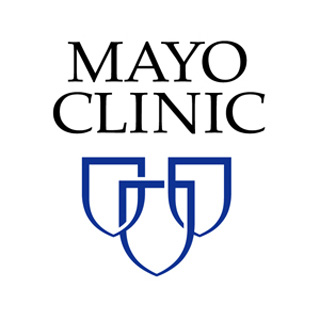Spinal Stimulation During Exercise in Heart Failure
| Status: | Recruiting |
|---|---|
| Conditions: | Cardiology |
| Therapuetic Areas: | Cardiology / Vascular Diseases |
| Healthy: | No |
| Age Range: | 18 - 90 |
| Updated: | 3/8/2019 |
| Start Date: | January 2016 |
| End Date: | June 2020 |
| Contact: | Briana Ziegler, BS |
| Email: | ziegler.briana@mayo.edu |
| Phone: | 507-255-7125 |
Spinal Cord Stimulation to Inhibit Afferent Feedback During Exercise in Heart Failure
The purpose of this proposal is to determine whether epidural spinal cord stimulation can
modulate cardiovascular control during exercise in Heart Failure patients.
modulate cardiovascular control during exercise in Heart Failure patients.
Forty Heart Failure (>18 yrs. of age) will be recruited. The study will include a total of 2
visits. All experiments will take place at the Mayo Clinic; at the outpatient radiology for
MRI screening, the Charlton Clinical Research Unit (CRU) for surgical suite for spinal cord
stimulation placement and the Saint Mary's Hospital Clinical Research Unit for clinical
exercise laboratory for the exercise protocol and overnight stay.
Study visit 1 will include eligibility screening, consenting process, completion of a health
questionnaire and performance of a peak oxygen consumption (VO2) test. Additionally, subjects
will undergo a screening lumbar MRI to ensure that there are no anatomical anomalies in or
around the epidural area consistent with standard clinical practice for epidural stimulator
lead placement associated with chronic pain syndromes.
Study visit 2 will include an overnight stay in the Saint Mary's Hospital Clinical Research
Unit. Patients will check in to the CRU in the morning of day 1, visit 2. Prior to placement
of stimulating electrodes an international normalized ratio (INR) will be checked to ensure
safe clotting. An anesthesiologist will place the electrodes in the lumbar/thoracic epidural
space in a manner that is standard for the clinical placement of temporary electrodes in
humans. The participants will then transfer to the clinical exercise laboratory to start the
exercise protocol. Participants will rest 15 minutes prior to starting exercise. Exercise
will take place on a vertical bike where they will perform a submaximal cycling exercise at
30% of peak work for 29 minutes. Thigh cuffs will be placed on thigh bilaterally and inflated
intermittently to pressures of 80m mmHg. After the testing is complete, participants will
return to their room in the Clinical Research Unit for the rest of the day and sty over
night.
On day two of visit two, participants will repeat the testing from day one with new
randomization to determine reliability of testing performed on day one. After the exercise on
day two of visit two, the spinal cord stimulator leads and radial arterial catheter will be
removed.
visits. All experiments will take place at the Mayo Clinic; at the outpatient radiology for
MRI screening, the Charlton Clinical Research Unit (CRU) for surgical suite for spinal cord
stimulation placement and the Saint Mary's Hospital Clinical Research Unit for clinical
exercise laboratory for the exercise protocol and overnight stay.
Study visit 1 will include eligibility screening, consenting process, completion of a health
questionnaire and performance of a peak oxygen consumption (VO2) test. Additionally, subjects
will undergo a screening lumbar MRI to ensure that there are no anatomical anomalies in or
around the epidural area consistent with standard clinical practice for epidural stimulator
lead placement associated with chronic pain syndromes.
Study visit 2 will include an overnight stay in the Saint Mary's Hospital Clinical Research
Unit. Patients will check in to the CRU in the morning of day 1, visit 2. Prior to placement
of stimulating electrodes an international normalized ratio (INR) will be checked to ensure
safe clotting. An anesthesiologist will place the electrodes in the lumbar/thoracic epidural
space in a manner that is standard for the clinical placement of temporary electrodes in
humans. The participants will then transfer to the clinical exercise laboratory to start the
exercise protocol. Participants will rest 15 minutes prior to starting exercise. Exercise
will take place on a vertical bike where they will perform a submaximal cycling exercise at
30% of peak work for 29 minutes. Thigh cuffs will be placed on thigh bilaterally and inflated
intermittently to pressures of 80m mmHg. After the testing is complete, participants will
return to their room in the Clinical Research Unit for the rest of the day and sty over
night.
On day two of visit two, participants will repeat the testing from day one with new
randomization to determine reliability of testing performed on day one. After the exercise on
day two of visit two, the spinal cord stimulator leads and radial arterial catheter will be
removed.
Inclusion Criteria, includes:
- Heart Failure patients with reduced ejection fraction:
- History of ischemic or idiopathic dilated cardiomyopathy (duration > 1yr.) stable for
> 3mo and New York Heart Association Class I-III
- Not pacemaker dependent
- Body Mass Index ≤35
- Ejection Fraction < 40%
- Current nonsmokers with < 15 pack year history
- Able to exercise
Exclusion Criteria includes:
- History of cardiopulmonary disorders and dangerous arrhythmias
- Pregnant women
- Taking prescribed opioid medications or have had a fusion or laminectomy at L3 or
above
- Patients with a recent drug-eluding stent
- History of spinal stenosis, lumbar radiculopathy, or peripheral neuropathy
- Must not currently be taking blood thinners or anticoagulant medications.
We found this trial at
1
site
Mayo Clinic Rochester Mayo Clinic is a nonprofit worldwide leader in medical care, research and...
Click here to add this to my saved trials
